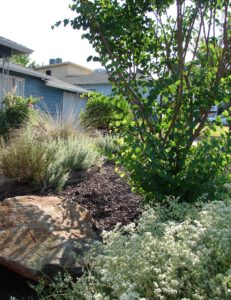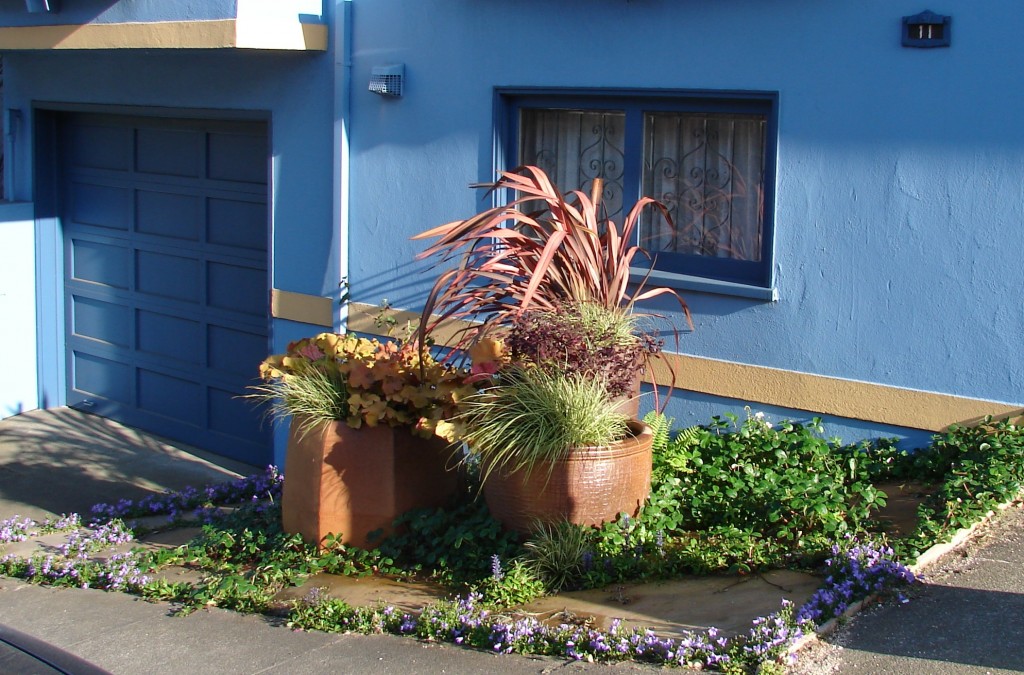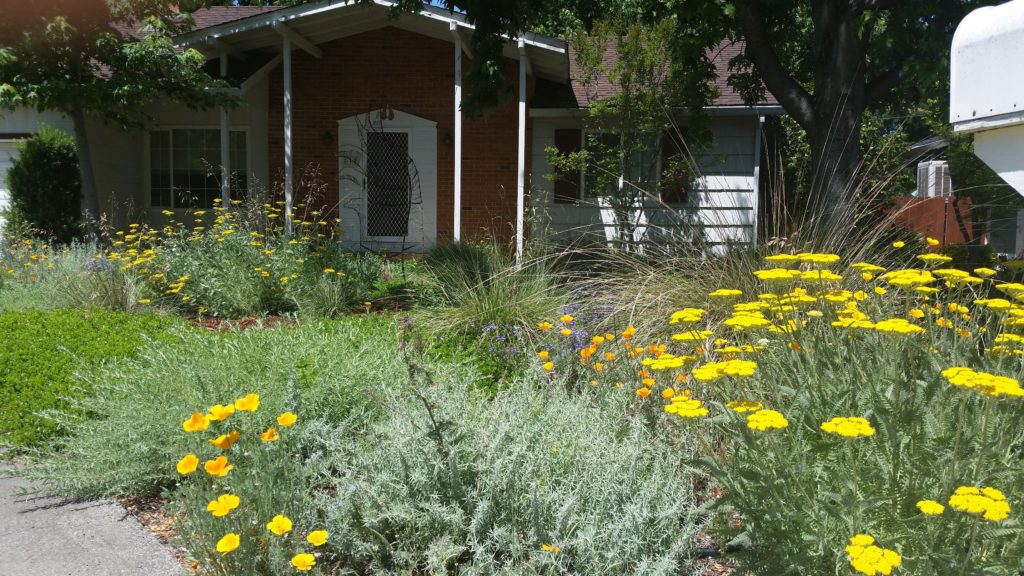This article is Part 2 in a series of four articles addressing planting design. In Part One, What Can I Give My Plants, we covered how to analyze your planting site to understand the cultural and existing conditions. The fun continues as we explore the second guiding question, What garden style do I want?
There are many garden styles to choose from so you’ll want to research: on the internet, in
neighborhoods, and in books or magazines. Note what you love as well as what you don’t like. Create an on-line idea book through available apps (Houzz, Pinterest), keeping in mind the opportunities and restrictions you’ve discovered in your analysis per question one.
A simple approach is to use the style of your home as an organizing principle. Plantings that complement a home’s architecture create a cohesive feeling. For example, the clean lines of Mid-century Modern architecture feel at home with simple plantings emphasizing foliage over flowers. Pairing a cute bungalow with an informal or fanciful garden harmonizes with the home’s charm and stature. You can also unify your house and garden by selecting plants that repeat or contrast with the home’s distinctive color scheme.
Some of the many garden styles include:
Drought Tolerant: A drought tolerant garden, featuring plants that require occasional to no summer water, respects California’s on-going water limitations. These gardens can sit on anywhere on the continuum from formal to informal but often lean toward a naturalistic look. Many of the plants that are drought tolerant in California will be native to areas with a “Mediterranean” climate like ours: cool, wet winters and dry, hot summers.
Pollinator: Your garden design can emphasize plants that nurture our native bees, butterflies, and birds. Altacal, the Northern California chapter of the Audubon society, offers a Neighborhood Habitat certification program and guidelines for creating pollinator gardens. In this type of garden, plantings are layered in height (low plants, medium shrubs, and taller trees) to offer varied habitat while staggered bloom times provide year-round nectar and pollen sources. Pollinators gardens tend to be whimsical, billowy informal affairs.
Cottage: Also attractive to pollinators is the exuberant, free-flowing, and busy cottage garden. Many varieties of plants rub shoulders in a tangle of flowers and vines, and paths are winding and overgrown. Informal, indeed.
Formal: The antithesis of the cottage garden is one that contains shrubs coaxed into symmetrical geometric designs. Often incorporating dense evergreen shrubs and plots of lawn, the formal garden is high-maintenance and low on food for pollinators. The gardens of Versailles set the standard for formality in an intentional display of the power of man over nature and King over the rabble.
 Naturalistic: This garden takes its cues from the plants that grow naturally in the undeveloped landscape. Plants are arranged to invoke a natural flow, as opposed to revealing decisions made by the gardener.
Naturalistic: This garden takes its cues from the plants that grow naturally in the undeveloped landscape. Plants are arranged to invoke a natural flow, as opposed to revealing decisions made by the gardener.
Artsy: Display your creative nature! For this type of garden, think outside the box for construction materials and methods. Broken concrete pieces, old pottery shards, and rusted drainage pipes can make appearances in paving and planting areas. Arrange your garden with focal points for art and other surprises.
The Modern Garden features asymmetrical geometry; industrial materials such as corrugated steel, wire mesh, and plain concrete; and simple, often horizontal, lines to create a clean aesthetic. Plants can soften the geometry or repeat it and usually lean toward foliage over flowers.
If you are in Butte County, CA, visit the Master Gardener Demonstration Garden at Patrick Ranch in Durham to see thriving examples of native, Mediterranean, and pollinator plants to use with any garden style.
Start your research! Appreciate gardens with new eyes to identify the elements discussed above. In coming articles, we’ll address question three: What Plant Jobs Need To Be Filled In My Yard; and question four: Is My Yard Ready To Plant. Happy Gardening!
Many thanks to Butte County Master Gardner Laura Lukes for her invaluable help in this article!

